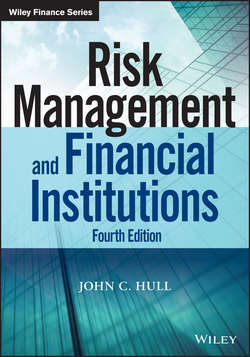Читать книгу Risk Management and Financial Institutions - Hull John C. - Страница 24
На сайте Литреса книга снята с продажи.
PART One
Financial Institutions and Their Trading
CHAPTER 2
Banks
2.6 POTENTIAL CONFLICTS OF INTEREST IN BANKING
ОглавлениеThere are many potential conflicts of interest between commercial banking, securities services, and investment banking when they are all conducted under the same corporate umbrella. For example:
1. When asked for advice by an investor, a bank might be tempted to recommend securities that the investment banking part of its organization is trying to sell. When it has a fiduciary account (i.e., a customer account where the bank can choose trades for the customer), the bank can “stuff” difficult-to-sell securities into the account.
2. A bank, when it lends money to a company, often obtains confidential information about the company. It might be tempted to pass that information to the mergers and acquisitions arm of the investment bank to help it provide advice to one of its clients on potential takeover opportunities.
3. The research end of the securities business might be tempted to recommend a company's share as a “buy” in order to please the company's management and obtain investment banking business.
4. Suppose a commercial bank no longer wants a loan it has made to a company on its books because the confidential information it has obtained from the company leads it to believe that there is an increased chance of bankruptcy. It might be tempted to ask the investment bank to arrange a bond issue for the company, with the proceeds being used to pay off the loan. This would have the effect of replacing its loan with a loan made by investors who were less well-informed.
As a result of these types of conflicts of interest, some countries have in the past attempted to separate commercial banking from investment banking. The Glass-Steagall Act of 1933 in the United States limited the ability of commercial banks and investment banks to engage in each other's activities. Commercial banks were allowed to continue underwriting Treasury instruments and some municipal bonds. They were also allowed to do private placements. But they were not allowed to engage in other activities such as public offerings. Similarly, investment banks were not allowed to take deposits and make commercial loans.
In 1987, the Federal Reserve Board relaxed the rules somewhat and allowed banks to establish holding companies with two subsidiaries, one in investment banking and the other in commercial banking. The revenue of the investment banking subsidiary was restricted to being a certain percentage of the group's total revenue.
In 1997, the rules were relaxed further so that commercial banks could acquire existing investment banks. Finally, in 1999, the Financial Services Modernization Act was passed. This effectively eliminated all restrictions on the operations of banks, insurance companies, and securities firms. In 2007, there were five large investment banks in the United States that had little or no commercial banking interests. These were Goldman Sachs, Morgan Stanley, Merrill Lynch, Bear Stearns, and Lehman Brothers. In 2008, the credit crisis led to Lehman Brothers going bankrupt, Bear Stearns being taken over by JPMorgan Chase, and Merrill Lynch being taken over by Bank of America. Goldman Sachs and Morgan Stanley became bank holding companies with both commercial and investment banking interests. (As a result, they have had to subject themselves to more regulatory scrutiny.) The year 2008 therefore marked the end of an era for investment banking in the United States.
We have not returned to the Glass–Steagall world where investment banks and commercial banks were kept separate. But increasingly banks are required to ring-fence their deposit-taking businesses so that they cannot be affected by losses in investment banking.
